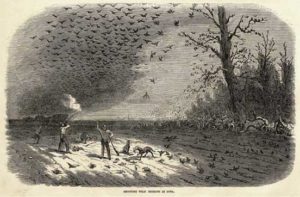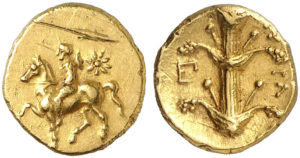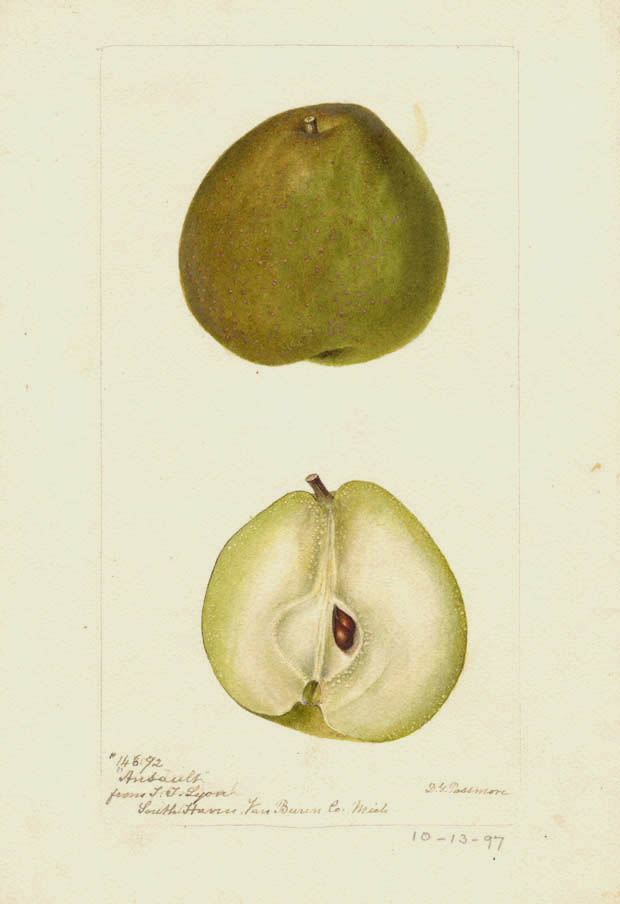Gastropod looks at food through the lens of science and history.
Co-hosts Cynthia Graber and Nicola Twilley serve up a brand new episode every two weeks.
Co-hosts Cynthia Graber and Nicola Twilley serve up a brand new episode every two weeks.
 "Shooting wild pigeons in Iowa," illustration from the 2 July 1867 edition of Frank Leslie’s Illustrated Newspaper (vol. XXV, no. 625, p. 8), from "Large-scale live capture of Passenger Pigeons Ectopistes migratorius for sporting purposes: Overlooked illustrated documentation," by Julian Hume.
"Shooting wild pigeons in Iowa," illustration from the 2 July 1867 edition of Frank Leslie’s Illustrated Newspaper (vol. XXV, no. 625, p. 8), from "Large-scale live capture of Passenger Pigeons Ectopistes migratorius for sporting purposes: Overlooked illustrated documentation," by Julian Hume.
"This project started because of a bird," Lenore Newman told Gastropod. "And that bird was Martha." Newman's project is a new book titled Lost Feast: Culinary Extinction and the Future of Food; Martha was a passenger pigeon and the last living member of her species—an "endling," as such lonely creatures are evocatively called. Her death, on September 1st, 1914, represented the first time that humanity watched a species disappear, in full awareness of the concept of extinction and our role in causing this particular one. "There was no denying it was us," said Newman: somehow, together, we had eaten so many pigeons that we had wiped the most abundant bird in North America off the face of the planet.
But the passenger pigeon wasn't our first culinary extinction. This episode, Newman takes us on a tour through the foods we have eaten to their end, such as the Pleistocene megafauna, which early humans destroyed as our numbers spread around the world, and the leek-flavored silphium that was so valuable its last stalks were hoarded, alongside gold and jewels, by Roman emperors. In each case, we sift through the evidence that points to human appetite as the leading cause of extinction, and unpack the response of a bewildered, bereft humanity.
 Gold coin from Cyrene, from between 308-250 BC; the tails side depicts silphium.
Gold coin from Cyrene, from between 308-250 BC; the tails side depicts silphium.
The Romans clung to the belief that their beloved silphium could perhaps spontaneous reappear someday; the idea that that something could be gone forever was simply, at the time, inconceivable. The concept of extinction—along with its mirror, evolution—wasn't formulated until the end of the eighteenth century, and it finally gave humans a framework within which to understand their actions. But, as Newman describes, the pace of culinary extinctions has only increased since then, with thousands and thousands of varieties of plants and breeds of animals vanishing in the early 20th century.
Why have we allowed so many of the foods we love to vanish? What impact has their loss had—and what lessons can it teach us for the future? Listen in this episode as Newman helps us tackle these morbid questions, leaving us with some hope, as well as a whole new perspective on chicken.
Lenore Newman holds a Canada Research Chair in Food Security and Environment at the University of the Fraser Valley, where she is currently an associate professor of geography and the environment. Her most recent book is Lost Feast: Culinary Extinction and the Future of Food; prior to that, she authored Speaking in Cod Tongues: A Canadian Culinary Journey.

The Ansault pear, painted by Deborah G. Passmore on 10/13/1897, from the collection of the USDA National Agricultural Library in Beltsville, Maryland.